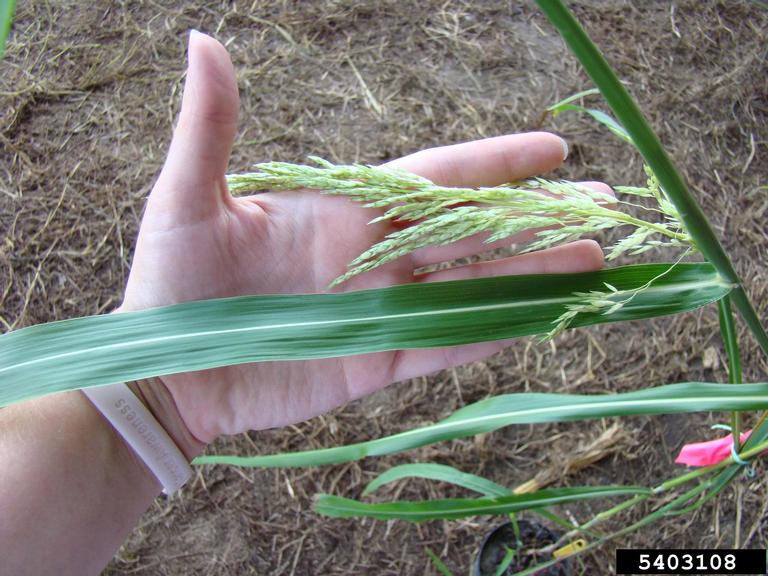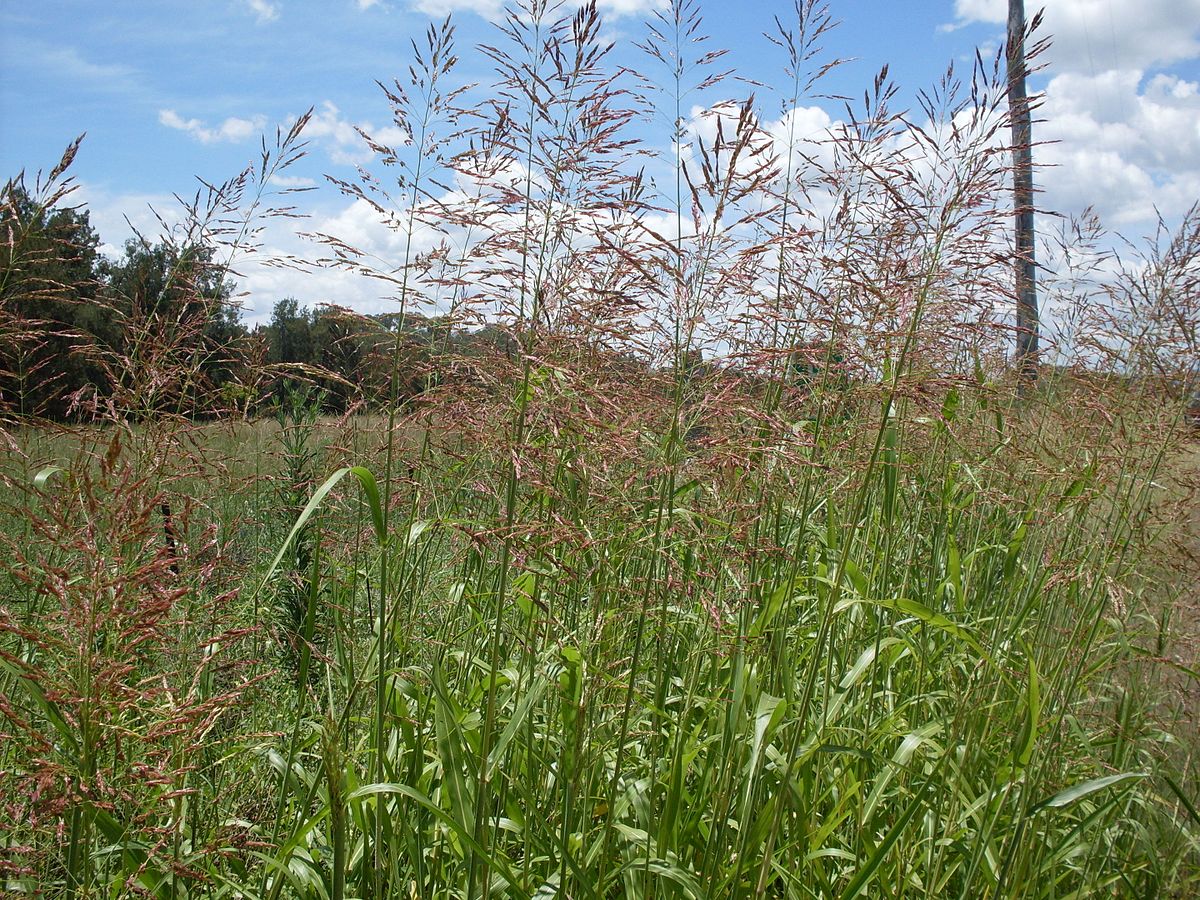Johnsongrass

Johnsongrass
(Sorghum halepense)
Priority: - Prevent / EDRR
Tags: Terrestrial
Identification and Reproduction
Identification:
- Johnsongrass is a perennial grass that grows up to 2.4 m tall.
- Leaves are alternate, hairless, lanceolate and have a distinct white midrib.
- Flowers are found in a loose purple panicle that can measure up to 50 cm in length.
- Culms above ground appear bulb-like and swollen.
- Rhizomes are fleshy, short and knotty.
Reproduction:
- This plant reporduces by rhizomes and seed.
- It is a prolific seed producer. Each individual panicle produces hundreds of seeds.
- Rhizome system is extensive and can reach to depths of 1.2 m.
- Can resprout from fragmented rhizome parts.
- Young plants that sprout from rhizomes grow much faster thatn seedlings.
Habitat & Ecology
- It grows in crop fields, pastures, abandoned fields, right of ways, forest edges, streambanks and other disturbed areas.
- Is very aggressive on exposed, rich, cultivated fields.
- Johnsongrass is found on every continent except for Antarctica.
Impacts
Social:
- Although edible, if an excessive amount of the foliage is consumed, it can kill cattle and horses.
- Can also cause excessive bloating of other livestock.
- Reduces pasture land and displaces crop species.
Ecological:
- Grows and spreads rapidly, outcompeting and shading out native species.
- Dense rhizomatous mats prevent the establishment of trees.
- Infestations dry and die in the summer and will be come a potential fire hazard.
Management
Prevention is a high priority for this species.
- Learn to identify this plant and report sightings.
- Clean and remove any seeds that may attach to clothing, shoes, equipment and pets when leaving an infested site.
- Refrain from moving unknown soil and plant matter.
Resources
For more information check out the Bugwood Wiki datasheet on Sorghum halepense.
Header photo (Hillebrand Steve).




